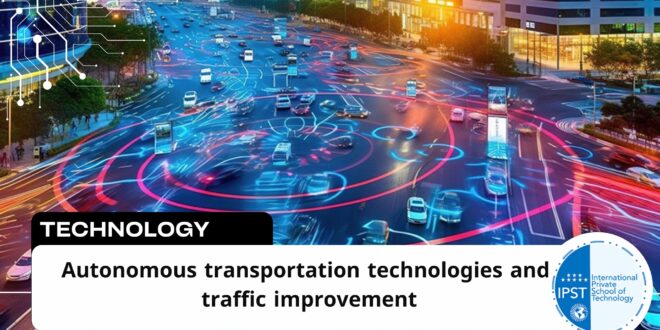Autonomous transportation technologies are one of the most transformative innovations in the transportation industry today. These technologies aim to reduce traffic congestion, improve road safety, and create more efficient transportation systems. In this article, we will explore how autonomous vehicles contribute to better traffic flow and the future of smart cities.
1. Reduced Traffic Accidents and Enhanced Road Safety with Autonomous Vehicles
One of the major advantages of autonomous transportation technologies is their ability to significantly reduce traffic accidents. Autonomous vehicles use a combination of sensors, cameras, and artificial intelligence (AI) to navigate roads safely, avoiding human errors such as distracted driving. Fewer accidents result in less congestion and smoother traffic flow.
2. Improved Traffic Flow through Vehicle Communication
Autonomous vehicles can communicate with each other and traffic management systems, sharing real-time data about road conditions, traffic signals, and accidents. This allows vehicles to adjust their speed and routes in a coordinated manner, minimizing unnecessary stops and ensuring a continuous flow of traffic.
3. Reducing Traffic Congestion with Smart Traffic Management
Autonomous transportation technologies can be integrated into smart city traffic management systems. Through real-time data collection, autonomous vehicles help optimize traffic signals, adjust traffic patterns, and prevent bottlenecks. This helps alleviate congestion, particularly in high-traffic urban areas.
4. Fuel Efficiency and Lower Emissions
Autonomous vehicles are programmed to drive more efficiently than human drivers. They maintain a consistent speed, reduce fuel consumption, and optimize their routes. This not only reduces traffic but also helps lower emissions, contributing to greener, more sustainable cities.
5. Autonomous Vehicles and Public Transportation Integration
The integration of autonomous vehicles into public transportation systems has the potential to improve overall traffic flow by reducing the number of personal vehicles on the road. With autonomous buses, taxis, and shuttles, public transport will become more accessible and efficient, allowing for a smoother transportation experience.
Conclusion: The Future of Traffic Flow with Autonomous Technologies
As autonomous transportation technologies continue to develop and become more widespread, they promise to enhance traffic flow, reduce accidents, and promote sustainability. The integration of autonomous vehicles into transportation networks will lead to smarter cities, where road safety and efficiency are optimized.
Source : http://IEEE Xplore



